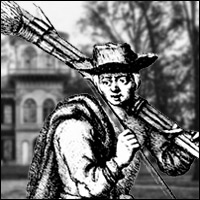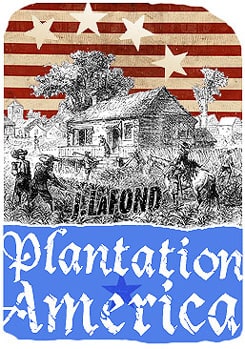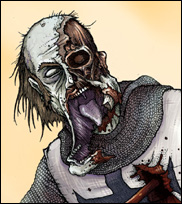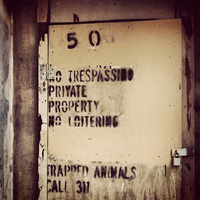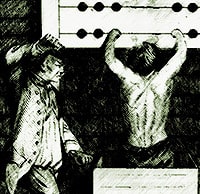“James, I’ve been following Stillbirth of A Nation and appreciate the effort. I recall seeing an interview with former comedian Dick Gregory—who is quite a good speaker. He is the man that played Grady on Sanford in Son back in the 1970s. He claimed that black slavery in America was really an adaptation of the enslavement of whites. Is there a clear date on either practice? When were the whites phased out and blacks phased in?”
-Jerome
Enslavement of whites in the English Colonies turns out to have been a much more complicated process than I thought up until a month ago. Mind you, I have been reading everything I can get on the subject for decades.
The enslavement of English-speaking people in the New World is ultimately based on the Vagabond Act of 1572. In the short term this just resulted in able-bodied men being pressgang into naval service [which sometimes landed them in the dungeons of the Spanish Inquisition and the benches of Spanish war galleys] and forced into military service. Some such men were marooned at Roanoke and otherwise sent to their death against Indians in the New World in 1585-7.
Ironically the first white slaves in North America were survivors of the Roanoke Colony of 1587 who were enslaved by Native Americans as artisans and sex objects.
Most historians lump all unfree non-African people in the colonies into the “indentured servant” category, as these were the first and the last types of unfree whites used as forced labor in the colonies. From the founding of Jamestown in 1607 until 1616 it seems that all or most of the settlers in Virginia were people who signed a contract to work as a slave for a fixed term, ranging from 3 to 31, but usually 7, years. These people were promised a good life, and then found themselves in the middle of a swampy forest, starving, and being stalked by savages. Many just laid down and died of melancholy. The value of labor spiked and with people in England getting wise to the deadly scheme to defraud them of their lives, not enough people shipped out voluntarily.
The first result was that by 1617, every white man in Virginia was either an owner of one or more [usually 10-100] white men, or was owned by a white man. Men and boys who agreed to serve out a term long enough to pay off their shipment cost were being sold for six times the fee, and enslaved for that much longer! These slaves were even being stolen from one master by another, with the result that such slaves were blamed, and in 1619 the Virginia Assembly passed a law to punish servants who switched owners without a bill of sale!
The first hundreds of kidnapped English children were shipped to Virginia and sold on the auction block in Jamestown in 1619, and by 1625 only 7 were alive.
By 1619, a Dutch slave ship up from the West Indies [probably Barbados] brought a cargo of black slaves, which were sold at a high price.
So what you have is a mere two year gap in white man as chattel and the black man as chattel in Virginia. Blacks would not be available to English slavers in sufficient numbers and at sufficiently low cost, to put a dent in the white slavery trade until the 1680s.
By 1640 there were black slaves, black indentured servants and black freemen [with the rights to hold slaves] in Virginia. This was pure economics of the cruelest sort with only two significant racial factors:
1. The American Indians that had been enslaved made poor slaves and died quickly
2. The English slaves were only fairly productive and were positively murderous, staging numerous rebellions, as they were embittered over their kidnapping or betrayal [with one greedy sister selling a younger brother, even as she told him she was buying him passage on a ship to a better life], and also because some were criminals who had been sold by judges out of prison.
As soon as affordable blacks, who had been broken in the West Indies, could be had at a reasonable price, they would begin to replace whites, taking on the backs all of the duties as well as the punishments developed to control, the English slaves. The slave pass system was developed to control white servants in this period.
Between 2,000 and 10,000 English indentures, servants, POWs and kidnapping victims were shipped into Virginia every year from roughly 1619 to 1670. Most of these died. Many became rogues and vagabonds or even Indians. By the time 1676 rolled around there were between 1,500 and 2,000 blacks of the three types, which constituted no more than 10% of the unfree labor. Perhaps a hundred lived as a band of bandit “maroons” in Northern Virginia. When Bacon’s Rebellion kicked off the only blacks that fought on the government’s side were freemen, with the slaves and indentures siding with the white indentures, vagabonds, beggars, rogues, debtors, and white freemen against the slave masters, who employed Indians and pirates as allies.
A smaller rebellion in North Carolina featured an alliance of blacks, Indians and poor whites.
With all of the terms, including Newgaters and Jalyebirds, used to describe unfree people, there was one umbrella term "bondsmen" which meant unfree, which was applied equally to whites and blacks.
Whites called themselves slaves, but were referred to as servants and indentures by their masters, a practice continued by historians to this day.
Blacks were referred to as servants, indentures and slaves, with the term indenture going out of use for blacks after 1680. Blacks were systematically deprived of rights via statute from 1670 onward. The terms servant and slave were interchangeable in the South up until 1865.
The racial divide in Virginia, in terms of unfree labor, began in 1680. The poor whites migrated West or stayed on as overseers or lingered in the back country, as they could not compete with the unpaid black slaves for jobs, or against the large slave holders in the commodity market.
In other colonies—mostly in the North—black slaves were held alongside whites by Quakers and Puritans, who operated food producing plantations that staffed up to 10 slaves for every free person. This situation persisted until the 1750s, when manpower was required to fight the French and Indians, and record numbers of white slaves escaped from Maryland Plantations and craft houses.
From 1700 on most white salves were Scottish or Irish, the practice dwindling from 1756 on, and dropping off sharply again after 1776, with the last record of a white slave being worked on a plantation left by Solomon Northup in the 1850s.


